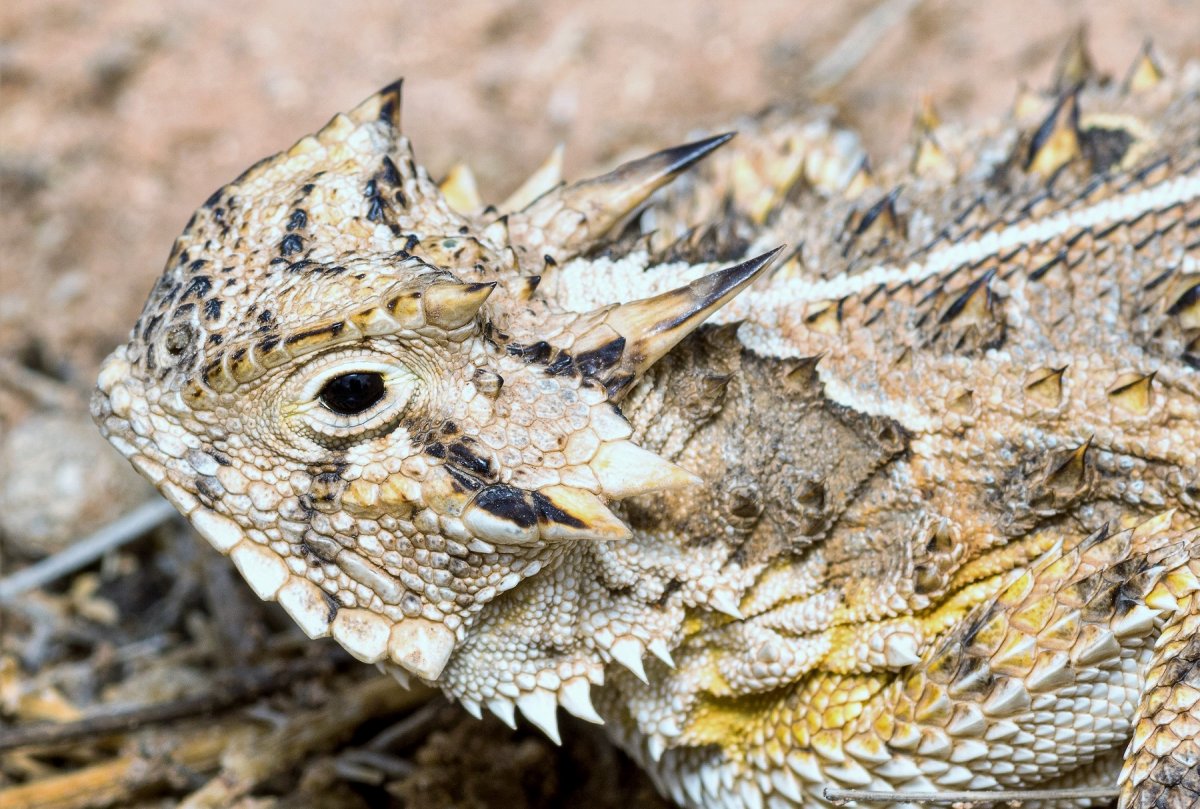An adorable video, seen above, shows the moment zoo staff released 50 Texas horned lizards into the wild on Wednesday, 28 September.
The horned lizards had been hatched at the San Antonio Zoo as part of an ongoing project to reintroduce the species to the wild.
The elusive lizard, also known as the horny toad, is native to Central Texas and was once abundant throughout a large range.
However, populations have declined or disappeared entirely in many places in the state since the 1960s due to factors including habitat loss, the introduction of exotic grasses and imported fire ants, and pesticide use.
As such, the lizard is currently listed as threatened in Texas.

Texas horned lizards are flat-bodied repties with several, prominent horns around its body and two central head spines.
The lizard's spiky appearance helps it blend into vegetation, and probably also has the added benefit of making it look less appealing to eat. Horned lizards are also known for their ability to shoot a stream of blood from their eyelids as a defense.
They can be found in arid, open areas with sparse plant cover and in loose sand or loamy soils.
In a video posted to Facebook by Texas Parks and Wildlife, several baby horned lizards are seen being released by hand onto a ranch in Blanco County, having been transported there in plastic tubs.
It is hoped the lizards will thrive in their natural environment, eating harvester ants.
San Antonio Zoo called the release a tremendous step forward for its Texas Horned Lizard Reintroduction Project, which was launched in 2017.
"This is our 3rd release, and we have seen evidence after each effort that lizards are alive and thriving on the landscape," said Dr. Andy Gluesenkamp, director of the Center for Conservation & Research at San Antonio Zoo, in a press release.
Before release, each lizard's genetics is documented and the release site is documented via GPS. Then, trained dogs are used to help researchers find the lizards' feces in the wild after they have been released.
This can provide all sorts of useful data such as how old the lizards are and how far they have traveled. It is hoped that researchers will eventually be able to tell which zoo lizards are reproducing.
On June 29 this year, San Antonio Zoo announced the successful hatching of 34 horned lizards, coinciding with Texas Horned Lizard Day. At the time, Tim Morrow, CEO of the zoo, called the reptiles "a state icon."
Uncommon Knowledge
Newsweek is committed to challenging conventional wisdom and finding connections in the search for common ground.
Newsweek is committed to challenging conventional wisdom and finding connections in the search for common ground.
About the writer
To read how Newsweek uses AI as a newsroom tool, Click here.








